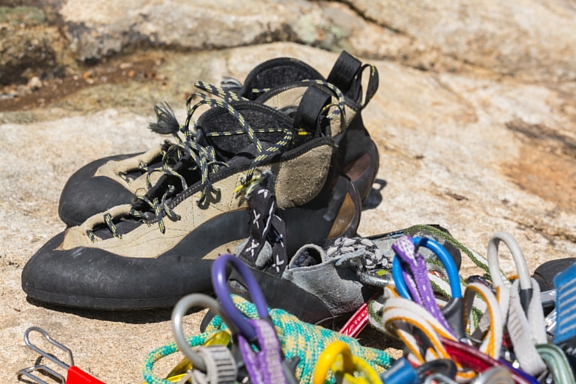It was basic and simple that first day climbing. Now when I set out the door to the rocks, be it for wall climbing, sport climbing, or bouldering, I’ve a bag of gear, food, and water that I always bring with me. For those looking to get into climbing on rocks, getting started can be simple with a little guidance on what you need and where to get it.
I recommend that anyone interested in learning how to rock climb sign-up for a beginner class at a local climbing gym or outdoor gear shop or guide school. There are some techniques and skills that are needed in order to rock climb safely.
Shoes
For the entry level climber, comfort and function are primary. Shoes can be a bit spendy and the rubber starts to wear out. In the days when I was a poor college youth I often found myself climbing in my Adidas Gazelles just to help make my real climbing shoes go the distance.
In general you want your shoes to fit snug; room around your toes leads to sliding inside the shoe and prevents you from being able to use your feet to the best of their ability. Let’s say in your street shoes you’re a size 6 – it’s best to get your climbing shoes in a 5. There are several companies that specialize in climbing shoes. La Sportiva has a great entry level shoe called the Nago, while FiveTen has an equally good shoe called the Spire.
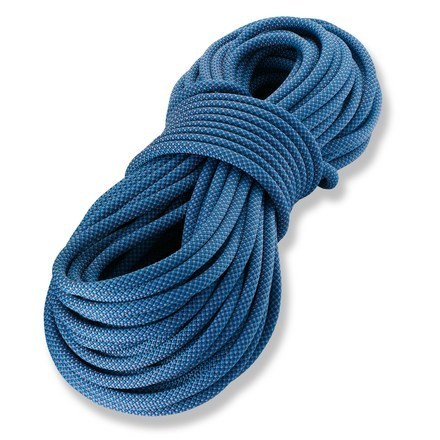
Climbing Rope
Every route climber needs a rope. There is an array of lengths and diameters made by several companies. Some of the top rope manufacturers are Mammut, Blue Water, Sterling, and Monster. As with the rest of the gear, what type of climbing you’ll be doing largely determines what rope you need.
For the beginner, a good 70 meter, 10mm rope dynamic rope is ideal. Some come with middle marks and some are bi-color. I’m a big fan of the bi-color as it allows for easy recognition of where the middle of the rope is.
A great entry level rope is the Mammut Galaxy.
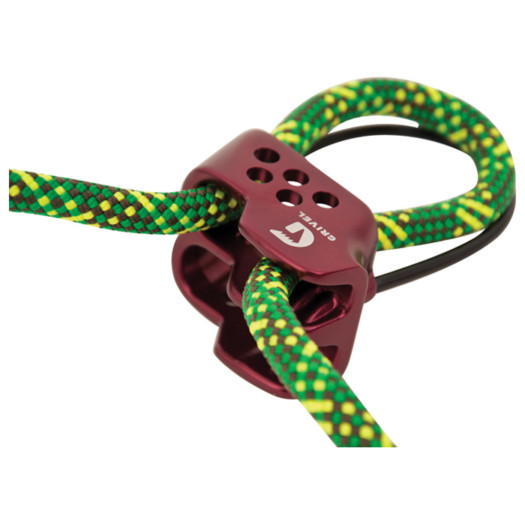
Belay device
Every route climber not only needs a rope and a partner; they also need a belay device. Belaying is one of the most essential climbing skills because you have your partner’s safety — and possibly even his or her life — in your hands.
In belaying, you control the rope’s movement to protect the climber at the other end. Your belay device applies friction to the rope, thus acting as a brake on the climbing rope. When used correctly, it stops the climber’s fall.
There are two styles of belay devices: manual and mechanical. I recommend the mechanical, auto-locking belay device called the GriGri for the beginner climber. This device feeds rope out smoothly and breaks automatically when the climber falls.
Another option for a belay device is the ATC. The benefit of this one is that it is lightweight and can also be used as a rappel device.
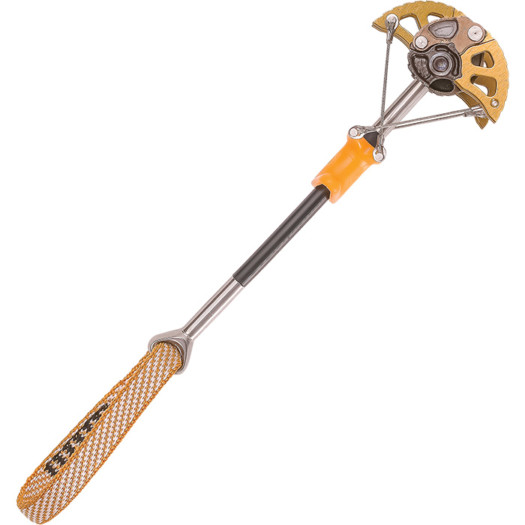
Hardware
There are an array of other hardware items that the to-be rock climber may need and want – it depends on what type of climbing is to be done.

Quick draws are carabiners with short pieces of webbing attached two together. One carabiner clips into the bolt, one clips into the rope. Many companies offer quick packs in groups of five or more for fairly reasonable prices, such as Mammut and Black Diamond Equipment.
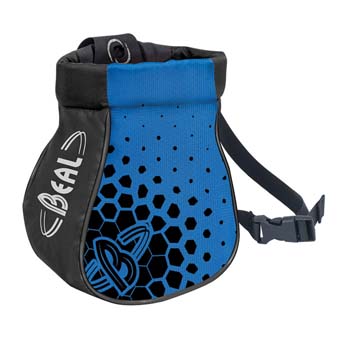
Bouldering
If you want to keep it real simple and forget about all the gadgets, ropes and harnesses, then you could opt to start bouldering. In this form of climbing all you need are climbing shoes, chalk, and a crash pad.
A figure walking carrying one of these things on their back can look quite funny to the unknowing passerby, and often times people will ask if it’s a portable bed. But never mind the odd comments and jeers – a crash pad is most important for the boulderer because when a boulderer falls, it is always a ground fall.


